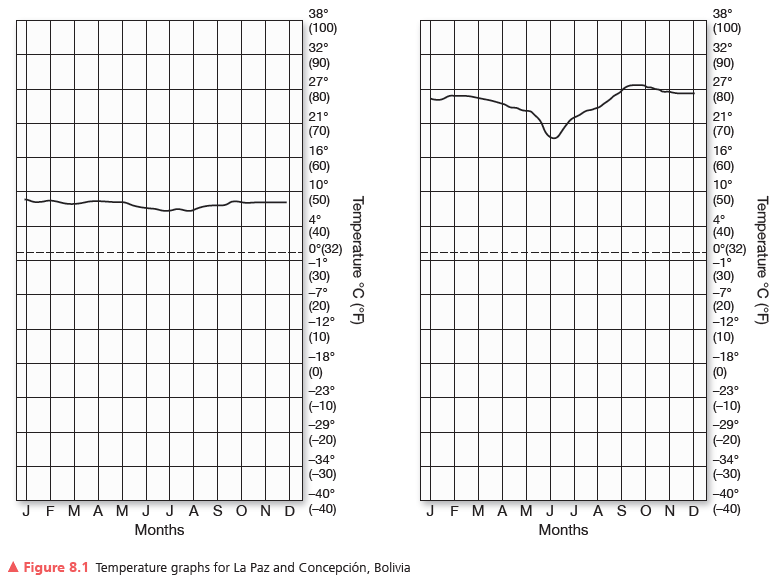Global positioning systems (GPS) can "know" their location by
A. relating changes in detected radiation to changes in the position of the Sun.
B. continually measuring changes in angle to a stationary reference point, such as a streetlight, in the area of the receiver.
C. relating slight changes in magnetism and gravity to changes in the distance and direction of movement from the point at which the location of the receiver was last calibrated.
D. measuring the time required for radio signals from four or more satellites to reach the receiver.
Answer: D
You might also like to view...
In 2025, 7 of the 10 biggest cities in the world will be in
A) Asia. B) Africa. C) North America. D) South America. E) Europe.
Why are the temperatures at La Paz more moderate in every month and so consistent overall as compared to Concepción?

During the past ice age, landmasses were generally
A) pressed down into the asthenosphere by the load of ice. B) elevated, because ice is lighter than rock. C) unaffected by the climatic conditions of the time. D) more exposed to the atmosphere.
________ would have the largest number of days in its year because
A. Neptune; it is farthest away from the sun, and therefore has farther to travel. B. The Earth; it has water on it which slows it down. C. Venus; it has an atmosphere that is so thick it can hardly move through space. D. Mercury; it moves very slowly because it so hot. E. Jupiter; it is the largest planet which makes it move faster around the sun.